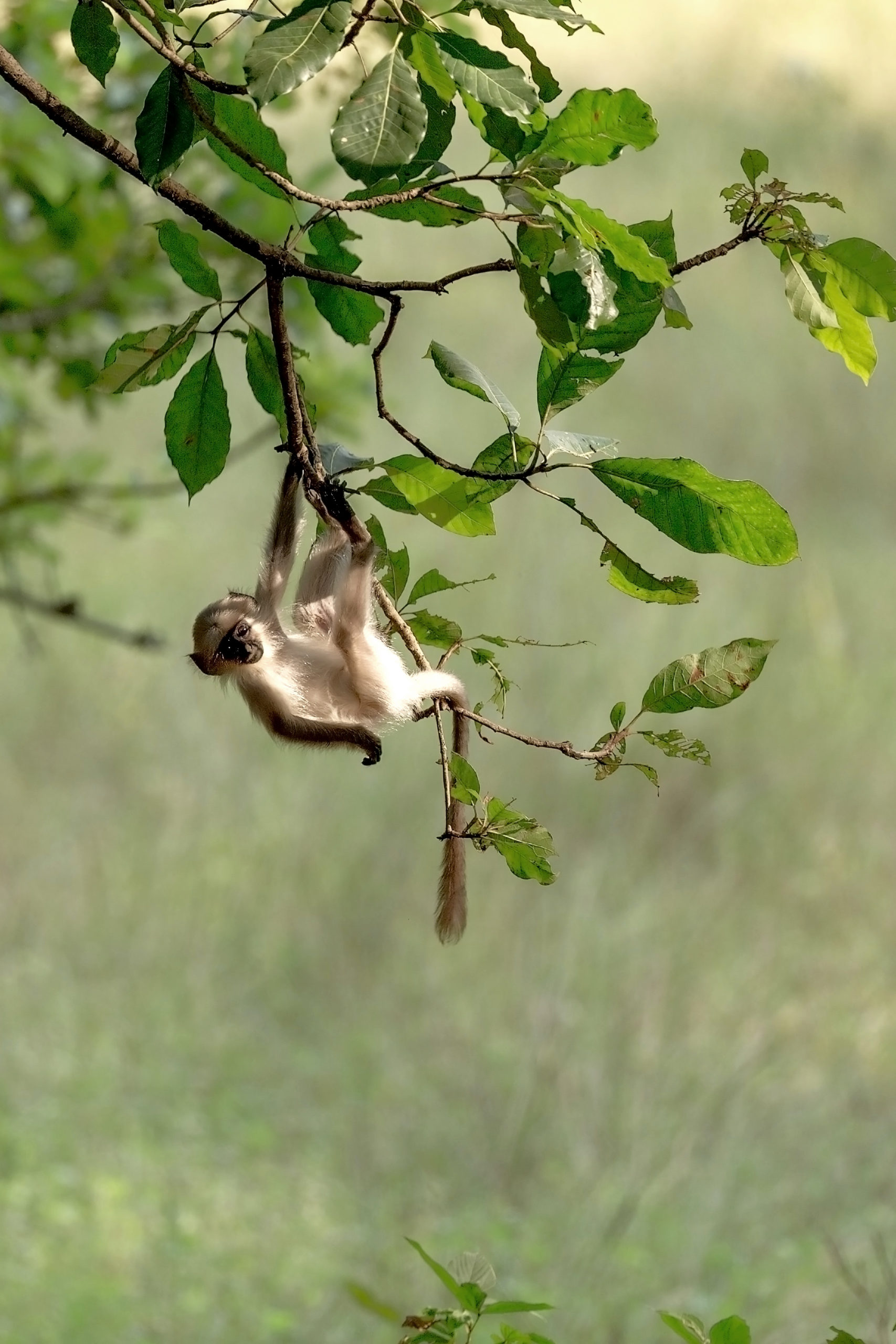 Out of the cage and back to the jungle
Out of the cage and back to the jungle
Confiscated monkey infants learn to cope with life in the wild
Up in the treetops, jumping from branch to branch makes them sway. One more swing - done! The delicious fruit is picked and eaten with relish. The little monkey boy hangs acrobatically upside down from the branches. But now quickly back to the herd of monkeys: The warning calls of the others announce a leopard nearby! When monkeys romp through the jungle, everything looks so easy and well-rehearsed. But what if they have never learned to hold on and balance on swaying branches? Where do the fruits grow that don't make the stomach hurt, and what does a crocodile actually look like? Without this knowledge and these skills, life in the jungle is extremely dangerous, even for monkey children. Like human children, the little monkeys learn everything they need to survive from their family and the other members of the monkey troop. If they are snatched away from their families and locked up as pets, they have to relearn life in the wild.
Necessity
Reintroduction training for confiscated monkey orphans from the illegal animal trade in the DRC
Activity
Upgrade the monkey sanctuary to a reintroduction centre and provide special training to the monkeys for a safe return into the wild
Countable effort
Number of monkey orphans that can initially be taken in and cared for and later be released into the wild
Result
The sanctuary's reintroduction programme is well established and dozens of monkeys are successfully released into safe forest areas on a regular basis
Systemic effect
Conservation authorities are taking more consistent action against the illegal pet trade, as they can now safely house the confiscated animals
Background
In the heart of Africa lies one of the most biodiverse countries on earth, a so-called “biodiversity mega-hotspot”: the Democratic Republic of Congo (CBD, 2022). Bonobos, golden-bellied mangabeys and other endangered monkey species are found exclusively in the DRC. It has the largest remaining rainforests in Africa. It is not for nothing that Congo is considered one of the top four countries for monkey conservation (Estrada et al., 2018). Monkeys are threatened not only by habitat loss, but also by poaching for the so-called ‘bushmeat trade’ and the illegal trade in young monkeys as pets or for amusement parks (Kazaba, 2019). All monkeys are protected by the Convention on International Trade in Endangered Species of Wild Fauna and Flora (CITES). However, species protection laws are only as good as they are enforced in practice. Police and enforcement officers can only confiscate illegally kept monkeys if there are also good accommodation facilities for them. However, the few existing monkey sanctuaries are already overcrowded. The monkey orphanage “J.A.C.K.” (Jeunes Animaux Confisqués au Katanga) in the DRC still takes in several species of monkeys (Pro Wildlife, 2022), but a reintroduction programme is now of utmost importance. This will make room for more confiscated animals and allow the reintroduced monkeys to contribute to the continuation of their species in protected forest areas. So far, there is no sanctuary in the Democratic Republic of Congo that has a reintroduction programme for small monkey species.
The good deed
With your donation today, you allow rescued monkey orphans to undergo reintroduction training. The basis for this is the construction of a reintroduction enclosure where a special training programme can be carried out for each monkey species. The animal keepers create these together with experts who have already successfully reintroduced various species. For a life in freedom, it is important that the monkey children are put together in groups that get along well with each other. In the reintroduction area, the monkeys are then weaned off their keepers. Together they practise collecting their food themselves - also hanging from branches or ropes to hone their climbing skills. They also learn about the edible plants and fruits of the forest. The correct behaviour in case of danger from predators is important for survival. Now the journey to freedom can begin. In the first weeks, the animals are monitored with radio collars until they have learned to safely find their way around their new territory.

About Democratic Republic of the Congo (DRC)
Kinshasa
Capital
92,377,986
Number of inhabitants
584.1
Gross domestic product per capita per year
Rang 179 von 191
Human Development Index
The Democratic Republic of Congo is the only country in the world that is home to three species of ape: gorillas, bonobos and chimpanzees.
About the organization and further information
Association
Pro Wildlife e.V.
Website

Further information and source
- Fobar, R., 2020. Largest confiscation of smuggled monkeys sheds light on African trafficking network. Artikel vom 22.12.2020 in National Geographic.
- CBD, 2022. Democratic Republic of the Congo - Biodiversity Facts: Status and trends of biodiversity, including benefits from biodiversity and ecosystem services.
- Kazaba, P., 2019. ‘Non-protected’ primates as bushmeat, pets and pests in southeastern Democratic Republic of Congo. Journal of Threatened Taxa 11(3): 13251–13260.
- Pro Wildlife, 2022. Affenschutz im Kongo - Affenwaisenhaus J.A.C.K.
- Estrada, A. et al., 2018. Primates in peril: the significance of Brazil, Madagascar, Indonesia and the Democratic Republic of the Congo for global primate conservation. PeerJ. 2018; 6: e4869.




